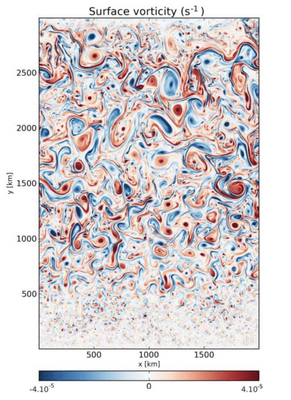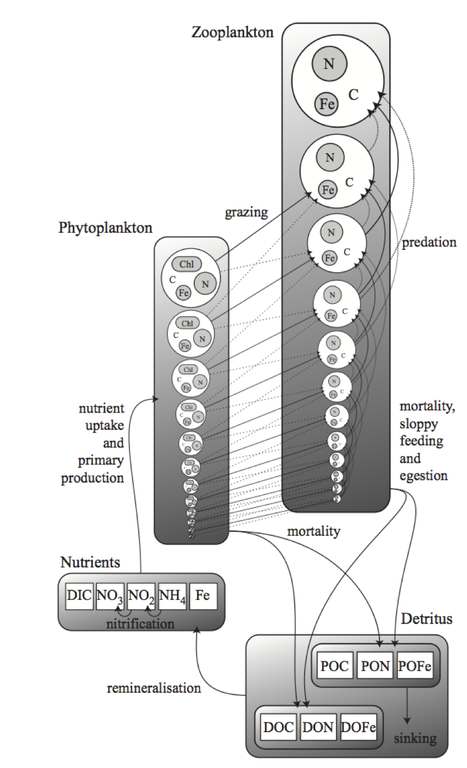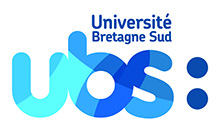Fanny Chenillat
Plankton Diversity and Dynamics in Submesoscale Frontal Structures
PostDoctoral Fellow: Dr Fanny Chenillat
Scientific Sponsors: Dr Pascal Rivière (LEMAR)
LabexMER Research Axis 1 and 2: ‘Ocean engine at very high resolution’ and ‘Efficiency of the biological pump’
In the last ten years it has become clear that vertical fluxes in the upper ocean occur mainly in structures such as filaments and eddies, at time scales of ~1 day and spatial scales of 1-10 km: the submesoscale (figure 1). Submesoscale dynamics drive half the vertical velocities that bring nutrients from deep layers to the well-lit surface layer of the ocean. These nutrient fluxes have direct impacts on planktonic ecosystem structure and functioning (e.g., figure 2) and thus the biological pump. However, these impacts are difficult to estimate both in the field, and in traditional numerical models because submesoscale dynamics are strongly nonlinear, forcing ecosystems at multiple time and space scales in three dimensions. Understanding the impact of the submesoscale on planktonic ecosystems is fundamental to obtain better estimates of the contribution of oceanic primary production to the global Carbon cycle.
This project aims to understand how submesoscale forcing impacts planktonic ecosystem dynamics using a high-resolution planktonic ecosystem model (QUOTA ecosystem model, figure 3) [Ward et al., 2012] coupled to high-resolution (2 km) circulation model. This novel size-structured, taxonomically resolved biological model, the QUOTA ecosystem model, is unique in its ability to reproduce the inherent complexity of the planktonic ecosystem and its biogeochemical cycles. Because of the intricacies of the submesoscale processes on plankton dynamics, we propose to disentangle the various mechanisms by contrasting an open-ocean system with a coastal system.
Figure 1:
Surface vorticity from a high-resolution (2 km) numerical experiment resolving the submesoscale dynamics (source: Jouanno et al., 2016).

Figure 2:
Concentrations (x-y 2D snapshots) of two different phytoplankton types (in mmol N m−3). Each phytoplankton type emerges differently in the same submesoscale field depending on their affinity for the resource (source: Perruche et al., 2011).

Figure 3:
Schematic representation of the ecosystem model, QUOTA (source: Ward et al., 2012).

References:
Jouanno J., X. Capet, G. Madec, G. Roullet, and Patrice Klein (2016) Dissipation of the energy imparted by mid-latitude storms in the Southern Ocean. Ocean Sci., 12, 743–769.
Perruche C., P. Rivière, G. Lapeyre, X. Carton and P. Pondaven (2011) Effects of surface quasi-geostrophic turbulence on phytoplankton competition and coexistence. Journal of Marine Research, 69, 105–135.
Ward B. A., S. Dutkiewicz, O. Jahn, and M. J. Follows (2012) A size-structured food-web model for the global ocean. Limnol. Oceanogr., 57(6), 1877–1891.
Document Actions











